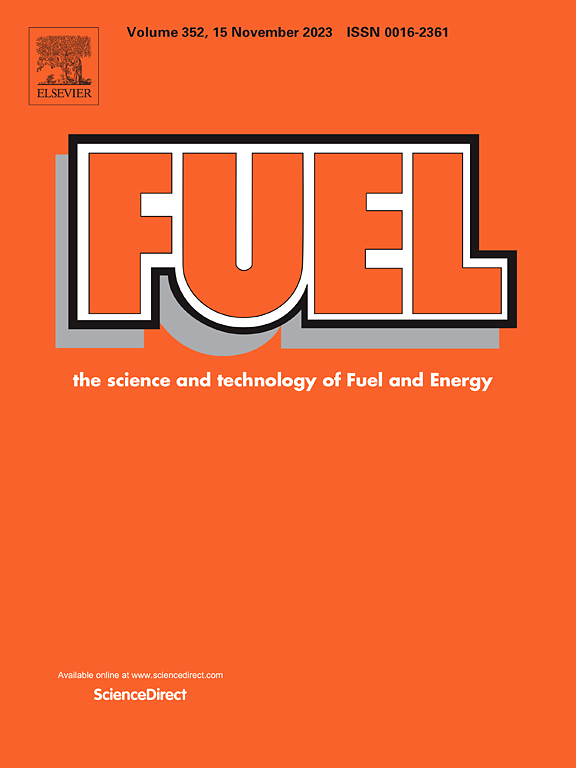Combustion of NH3/DME and NH3/DME/NO mixtures
IF 6.7
1区 工程技术
Q2 ENERGY & FUELS
引用次数: 0
Abstract
The objective of this work is to study the oxidation of ammonia and dimethyl ether mixtures (NH3/DME) both in the absence and the presence of monoxide of nitrogen (NO). For this purpose, laboratory experiments have been conducted in a quartz flow reactor setup in the 875–1425 K temperature range at atmospheric pressure, modifying the oxygen excess ratio (λ), and the NH3/DME mixture ratio with and without NO. The experimental results have been simulated with a literature-based kinetic mechanism. The results show that the presence of DME and an oxygen excess ratio affect the conversion of NH3, shifting its oxidation to lower temperatures, which decrease as the DME concentration in the mixture and λ increase. Interactions between ammonia and DME seem to be important under the studied conditions, presumably involving the formation and thermal decomposition of methyl nitrite (CH3ONO). These interactions affect the oxidation of ammonia at low temperatures, consume and produce NO, which would determine the final NO emission. When there is NO in the NH3/DME mixtures, NO is reduced up to 60 %, also favouring the oxidation of ammonia, but with an almost imperceptible effect of NO in the case of DME. The addition of different concentrations of DME also affects the oxidation behaviour of ammonia in NH3/DME/NO mixtures. In general, the conversion of both NH3 and DME is highly determined by the concentration of OH radicals, although thermal decomposition is also relevant for DME.
NH3/DME 和 NH3/DME/NO 混合物的燃烧
这项工作的目的是研究氨和二甲醚混合物(NH3/DME)在没有一氧化氮(NO)和有一氧化氮(NO)的情况下的氧化过程。为此,我们在石英流动反应器中进行了实验室实验,温度范围为 875-1425 K,压力为大气压,改变了氧气过剩率 (λ),以及有氮氧化物和无氮氧化物时的 NH3/DME 混合物比率。实验结果通过基于文献的动力学机制进行了模拟。结果表明,二甲醚的存在和氧过量比会影响 NH3 的转化,使其氧化温度降低,而随着混合物中二甲醚浓度和 λ 的增加,温度也会降低。在研究条件下,氨和二甲醚之间的相互作用似乎很重要,可能涉及亚硝酸甲酯(CH3ONO)的形成和热分解。这些相互作用会影响氨在低温下的氧化,消耗并产生 NO,从而决定最终的 NO 排放量。当 NH3/DME 混合物中含有 NO 时,NO 的减少量可达 60%,这也有利于氨的氧化,但在 DME 的情况下,NO 的影响几乎无法察觉。添加不同浓度的二甲醚也会影响 NH3/DME/NO 混合物中氨的氧化行为。一般来说,NH3 和二甲醚的转化在很大程度上取决于 OH 自由基的浓度,尽管热分解也与二甲醚有关。
本文章由计算机程序翻译,如有差异,请以英文原文为准。
求助全文
约1分钟内获得全文
求助全文
来源期刊

Fuel
工程技术-工程:化工
CiteScore
12.80
自引率
20.30%
发文量
3506
审稿时长
64 days
期刊介绍:
The exploration of energy sources remains a critical matter of study. For the past nine decades, fuel has consistently held the forefront in primary research efforts within the field of energy science. This area of investigation encompasses a wide range of subjects, with a particular emphasis on emerging concerns like environmental factors and pollution.
 求助内容:
求助内容: 应助结果提醒方式:
应助结果提醒方式:


